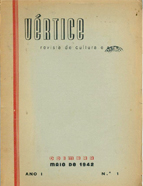

................................
Not everyone orthodoxly accepted the economic monism of history disseminated by Marxist-Leninist-inspired theses. Piteira Santos, for example, stated that “the ideas of men are also a force”, ironically questioning whether “it is necessary for a narrow materialist to discreetly remind the flock of this concrete value of ideas” (no. 55, Mar. 1948, 237). Borges de Macedo also questioned the need to “purge” the ideological prejudices of an “idealistic” historiography. For if history was a science, it was also testimony, insofar as the historian brought his present condition, his problems and the environment of his time into historiography. Although this idea was commonly accepted, Borges de Macedo did not consider that the presence of the historian was an obstacle to obtaining “historical truth”. Beyond historical psychology, which would act as a “corrective element”, truth was rather the result of “objective partialities” and the accumulation of historiographical interpretations that give a broader view of human experience (no. 123, Nov.-Dec. 1953, 655-7).
These various theoretical reflections were not the only means of affirming the scientific value of history; the importance of critical reviews in Vértice should also be highlighted. These often served as a tool for bringing theory closer to historiographical practice, as an exercise in organising discourse. This intention was present in two reviews that António José Saraiva wrote of books by his friend Óscar Lopes, lamenting a certain propensity for psychological interpretation that “clashed” with the sociological perspective, thus giving one of these books an “incongruous eclecticism” (no. 48, July 1947, 235). In another sense, in Augusto da Costa Dias’ analysis of António José Saraiva’s Inquisição Portuguesa, this total conformity between theory and practice was praised, to the point of stating that accurate knowledge of the “laws of social development” gave a definitive character to this history, which subsequent studies “will only confirm and enrich in detail” (no. 151, Apr. 1956, 169-73).
This work is financed by national funds through FCT - Foundation for Science and Technology, I.P, in the scope of the projects UIDB/04311/2020 and UIDP/04311/2020.
